When I moved into my new, dedicated sewing space, I had a pretty good idea of the general layout of the space. In practice, it took more than a year to figure out the nuances of how each area would work the best for me and my creative work.
Today, I’m going to begin giving you a tour of the space, starting with one of the areas where I spend the most time- the sewing machine. Ideally, the sewing machine table doesn’t have tons of extraneous items to knock off while you sew, but there are a few notions and tools that I like to keep at my fingertips while I sew.

Sewing Machine Setup
In addition to a sewing machine, my sewing table features a cutting mat, a couple of rulers, and a rotary cutter, which typically reside under the sewing machine extension, along with machine accessories, sewing notions, and thread.
Table
My table is 24” x 72” and was originally designed as a workbench. A table specifically designed for sewing is not within my current budget, so I opted for this alternative. I can adjust the height of the table using an attached crank, allowing me to quilt for hours or raise it up to foundation paper piece while standing.
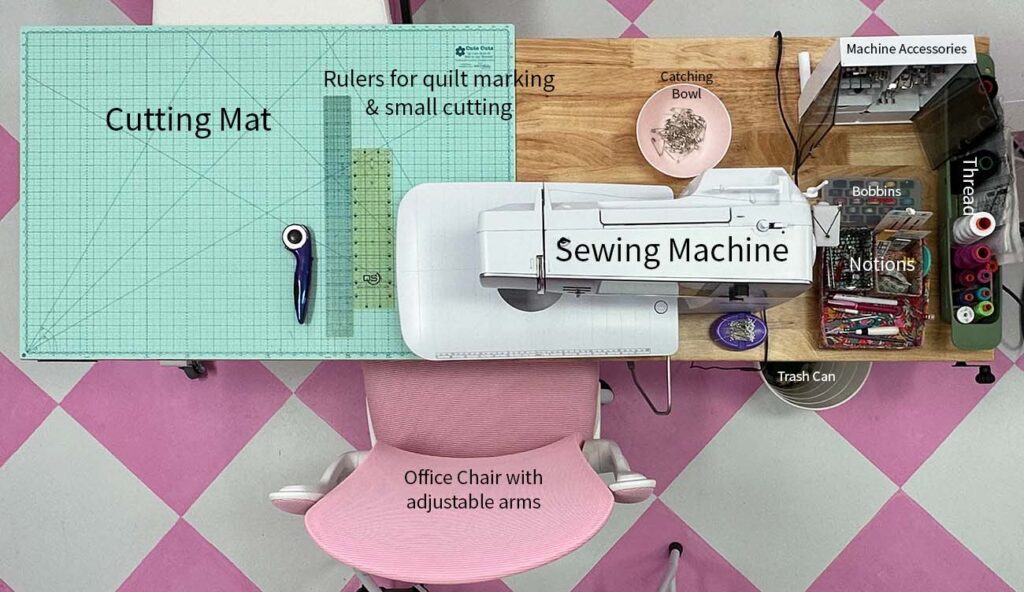
Chair
While I’m probably in the minority, I don’t like office chairs with arms. I’m up and down all of the time, and I tend to get my project caught on the arms. For some reason, almost all adjustable chairs now have arms, so I was thrilled to find one that allowed me to fold the arms up when I don’t want to use them.
Cutting and Measuring Tools
I do a lot of foundation paper piecing, so having a cutting surface next to my machine is extremely helpful. My cutting mat is slightly larger than 24” x 36” and extends to the base of my sewing machine.
A 3” x 12” non-slip cutting ruler and a rotary cutter complete my standard cutting setup, which is stored under the sewing machine extension table.
For marking piecing and quilts, I prefer a flexible gridded 2” x 18” ruler that also hangs out under the sewing machine extension.
Machine Accessories
My BERNINA 770QE PLUS sewing machine came with an accessory case that I have heard affectionately termed the grown-up Barbie wardrobe. I actually have more presser feet than fit into the case, but my most frequently used feet are easily accessible with this table setup. This case also includes machine maintenance tools, making it easy to clean and oil the machine when needed.
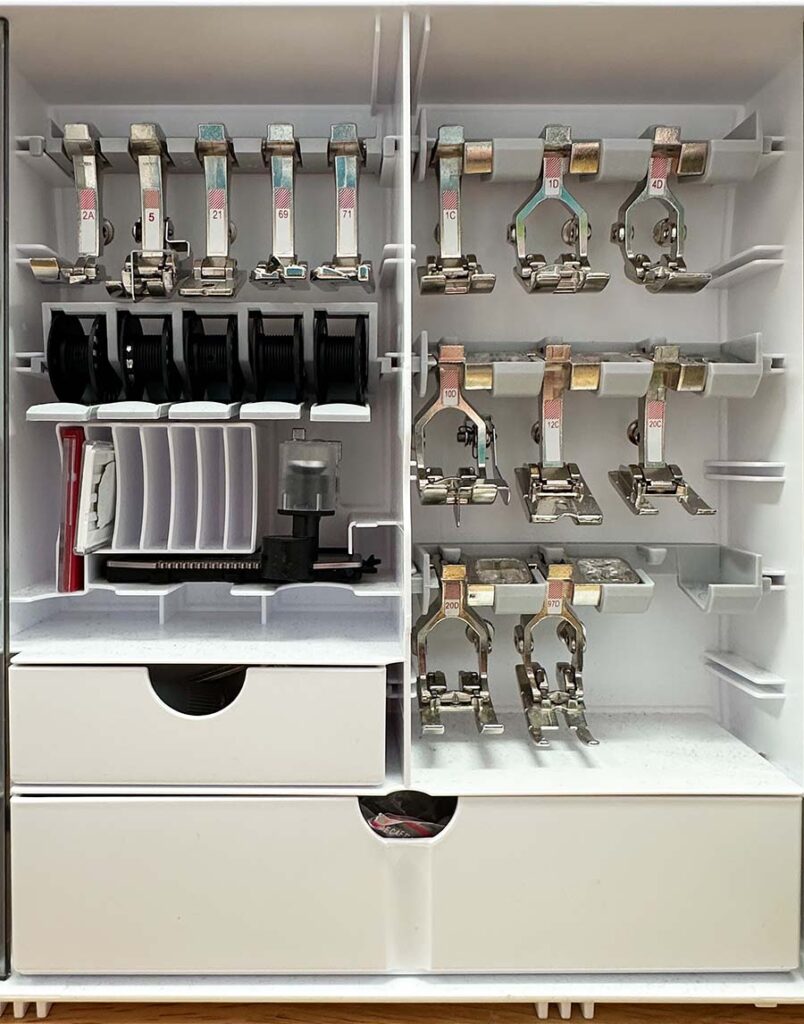
Thread Stand
I use all Aurifil thread for quilting, but Superior makes an awesome thread stand. I primarily use it for thread on cones, but it has different configurations for spools of every type (even bobbins).
Thread Storage
Most of my thread is stored in drawers across the room, but I tend to work on projects that use multiple thread types, so I’m constantly switching threads. My most recent organizational purchase came from the kitchen section of IKEA, and was originally made to go across a sink. It also happens to be the perfect width to hold a cone of thread!
Notions and Small Tools
Last Fall, I made several projects from Aneela Hoey’s book, Stitched Sewing Organizers, including these fabric boxes that live next to my sewing machine. The small boxes are designed to nest in the larger box, which is perfect for holding my sewing notions. The small box on the left side holds my walking foot and accessories, and the small box on the right holds smaller sewing notions.
Easy to Grab Notions
Longer and pointier notions fit in the front of the fabric box and are easy to grab as I’m sewing. For the types of sewing I do, I keep two types of tweezers, a stiletto, seam ripper, snips, and removable fabric marking implements on hand. Using a box for these implements also means that the sharper items are less likely to fall on your foot if they are accidentally bumped.
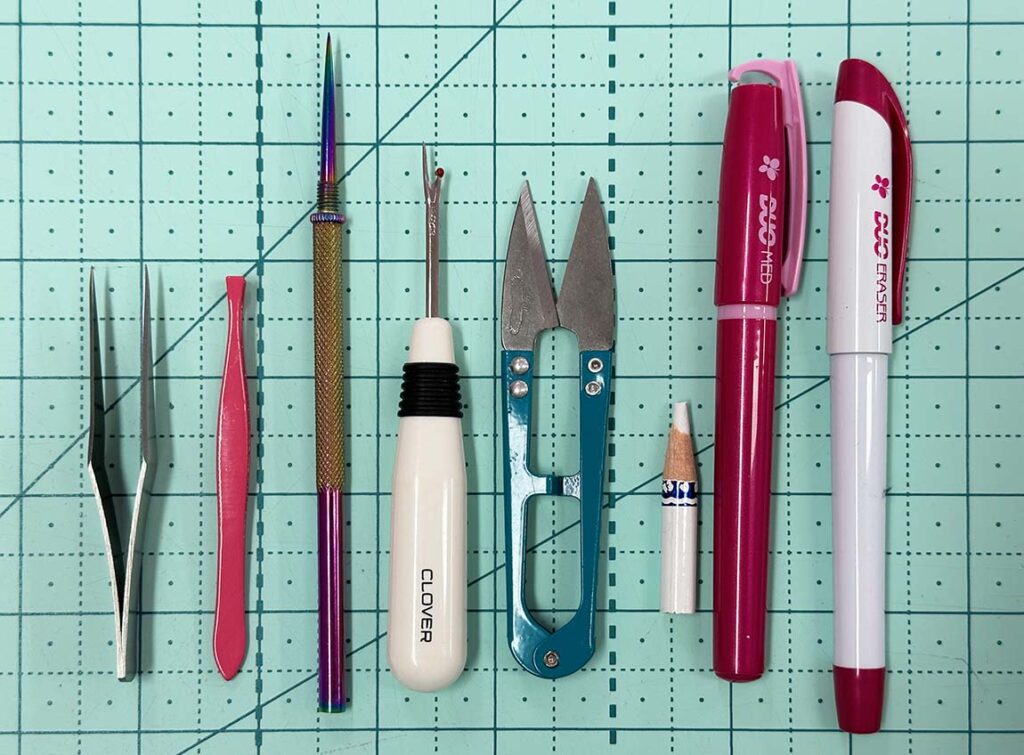
“Catching” Bowl
I always keep a small plastic bowl next to my sewing machine to catch any loose items. I have been quilting lately, so in this picture, I’m catching safety pins from a pin-basted quilt, but I also use it to collect scraps while foundation paper piecing, bits of thread when sewing, or even extra spools of thread.
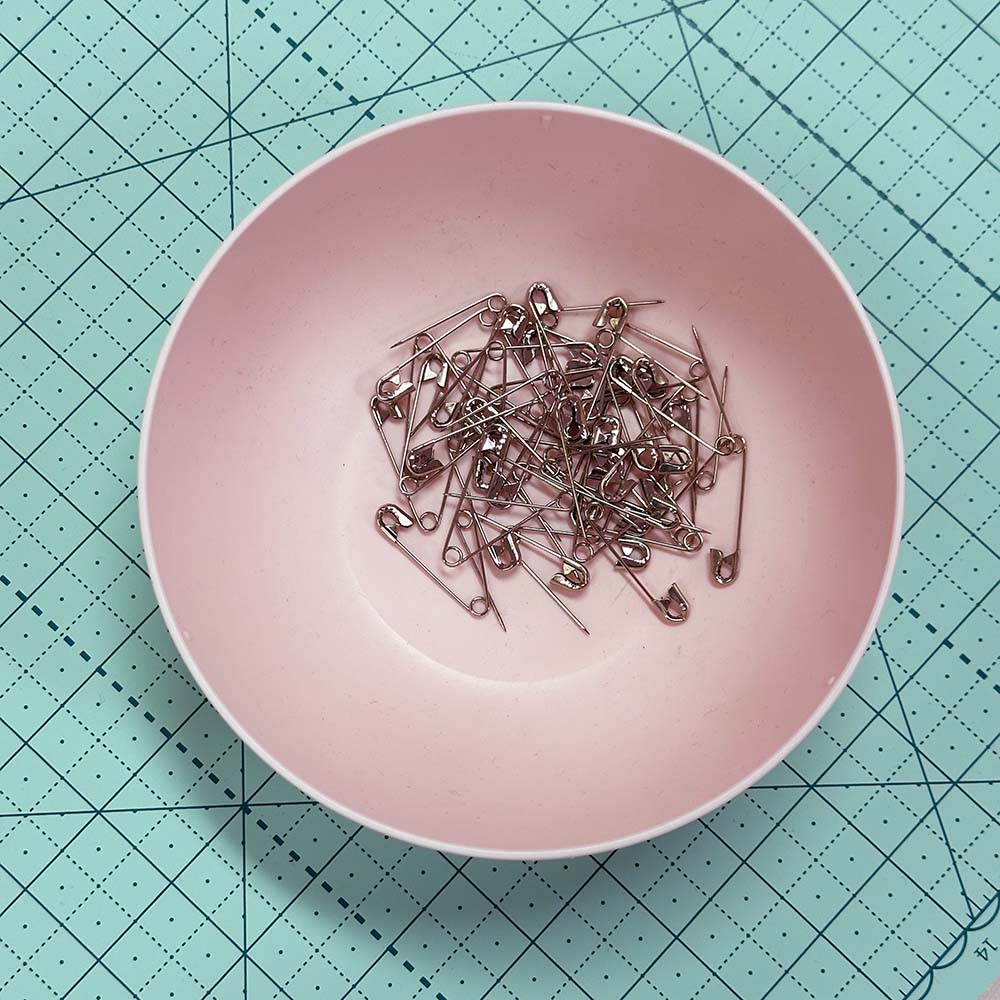
Thread Burying Pin Cushion
When I need to stop or start quilting in the middle of a quilt, I prefer to knot and bury the thread tails to achieve a seamless finish. To accomplish this goal, I use a side threading needle and a needle with a thread loop. These two needles have their own pin cushion, so they are always easy to find. (I just love this little chicken I received in a guild swap!)
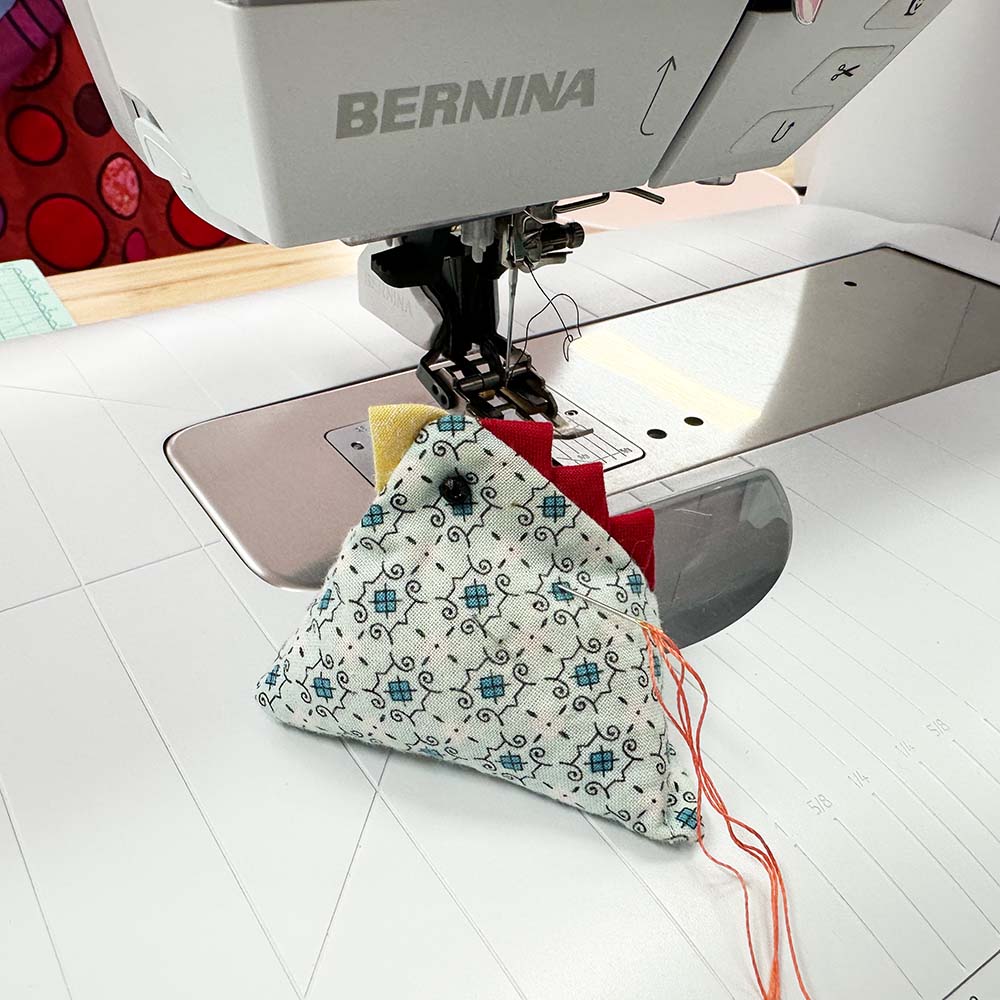
Needle Chart
Using lots of thread weights and material types means I need to change needles frequently. I primarily use Schmetz needles, which are color-coded by type and size. I frequently need to refer to this helpful chart to change back and forth between lightly used needles.
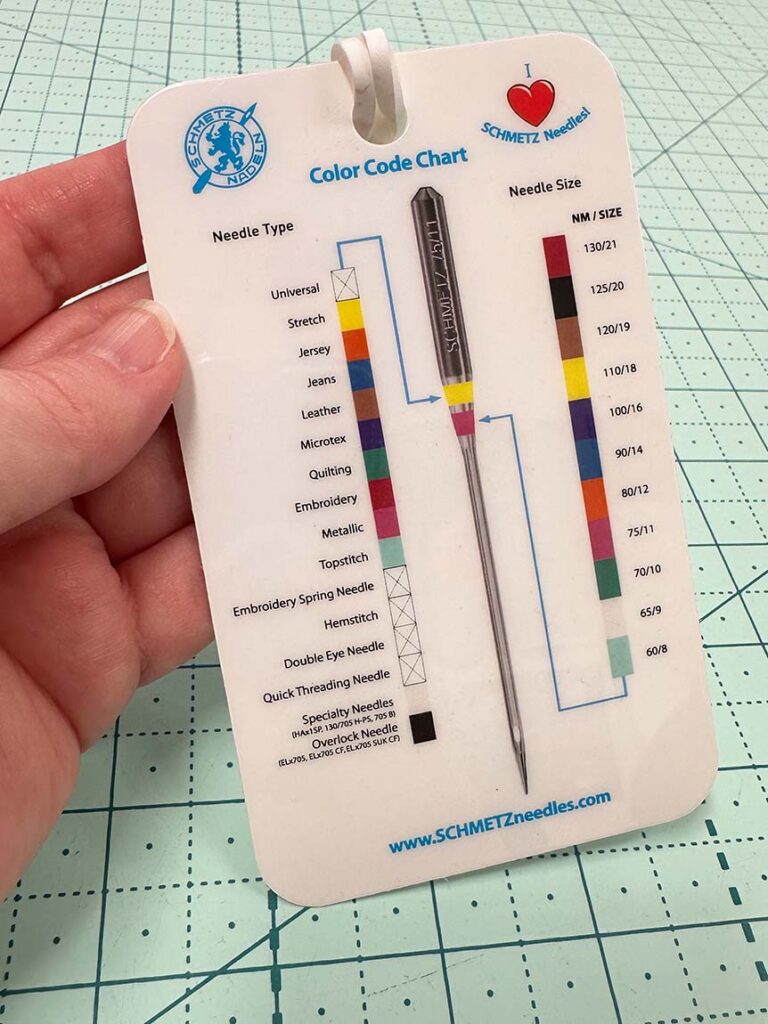
Your Sewing Area
Do you keep the same tools near your sewing machine? What notions do you always keep within reach?

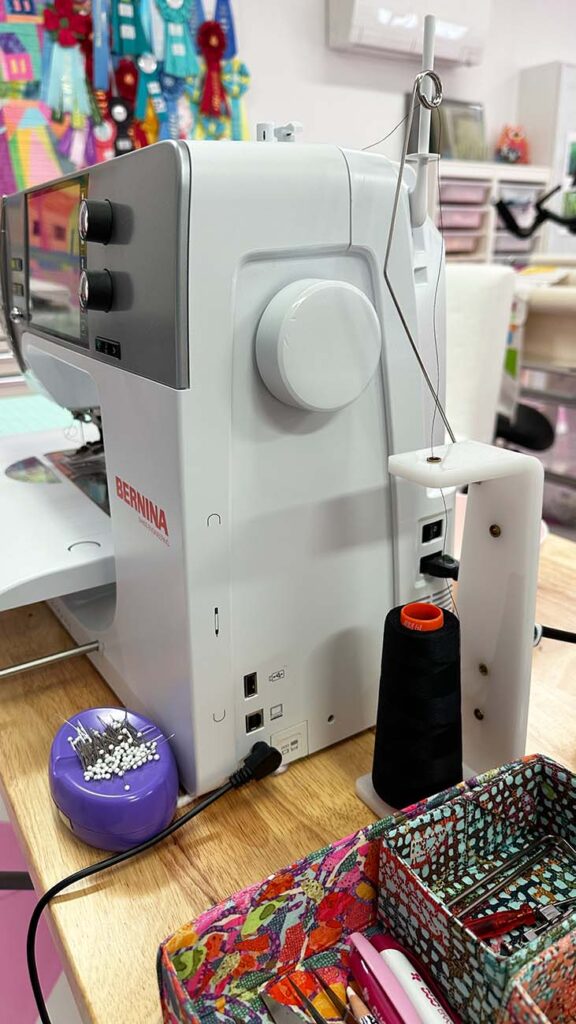
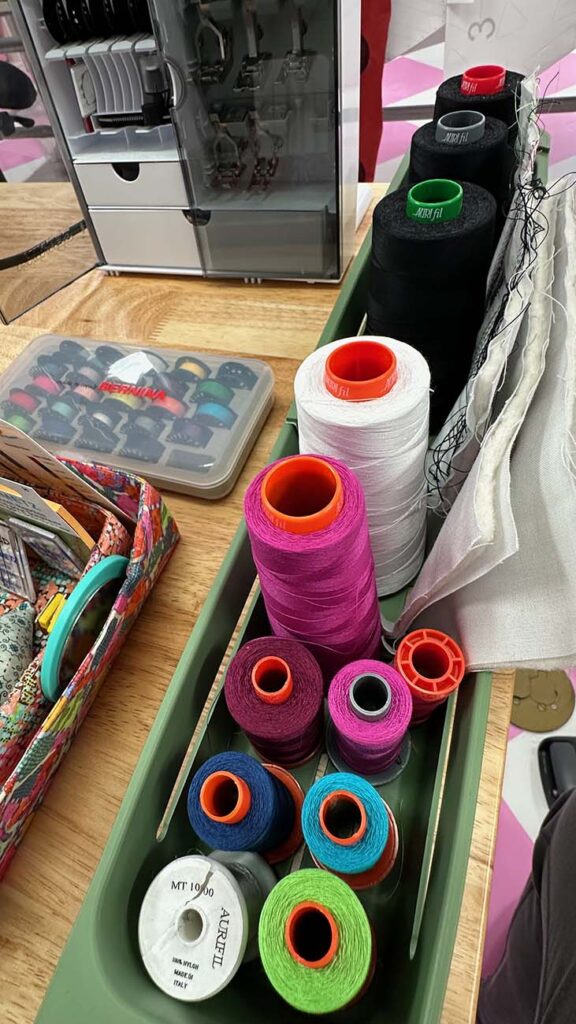
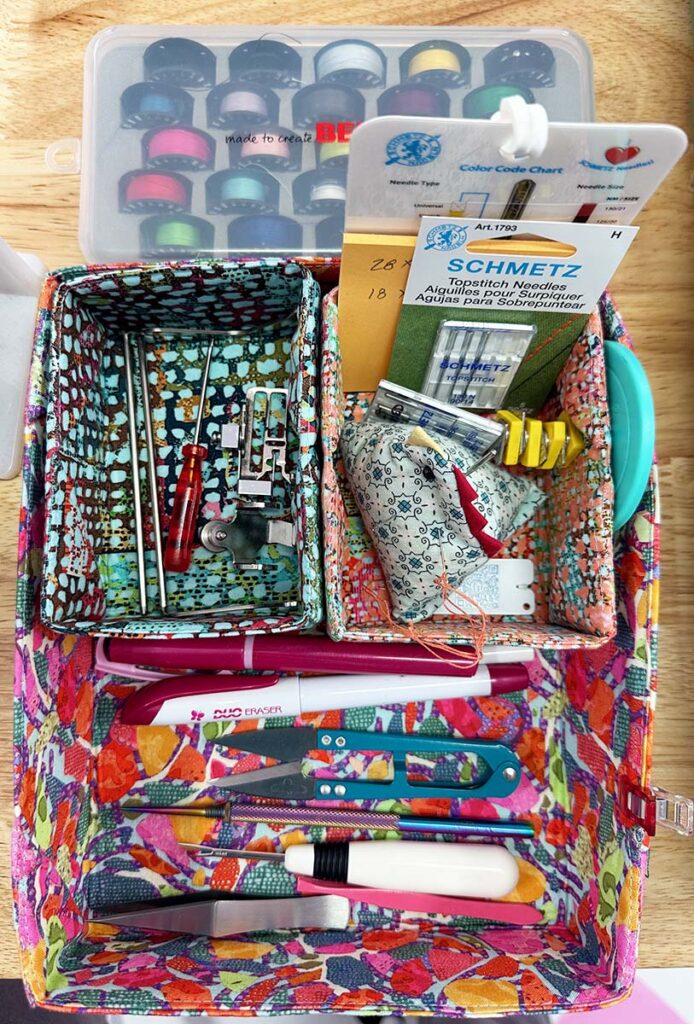
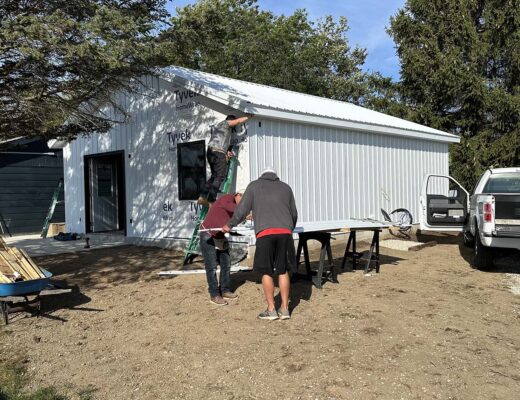
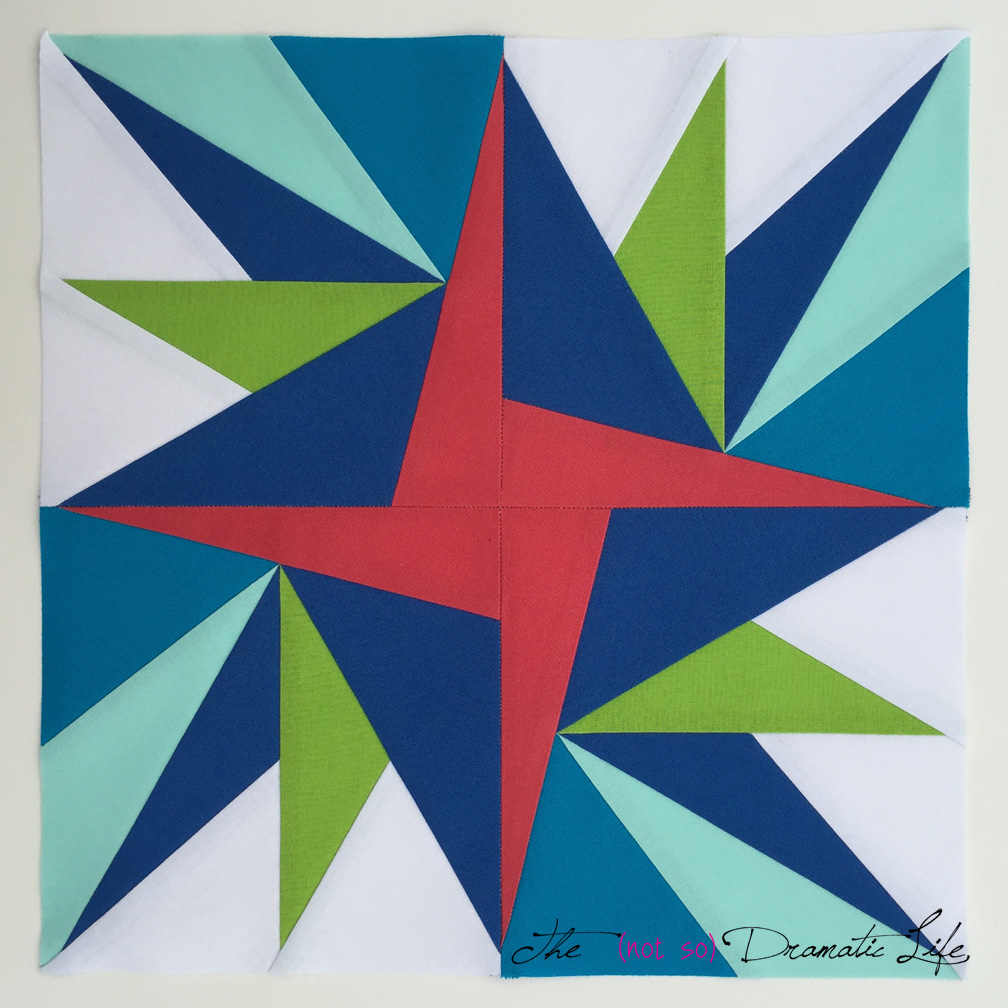
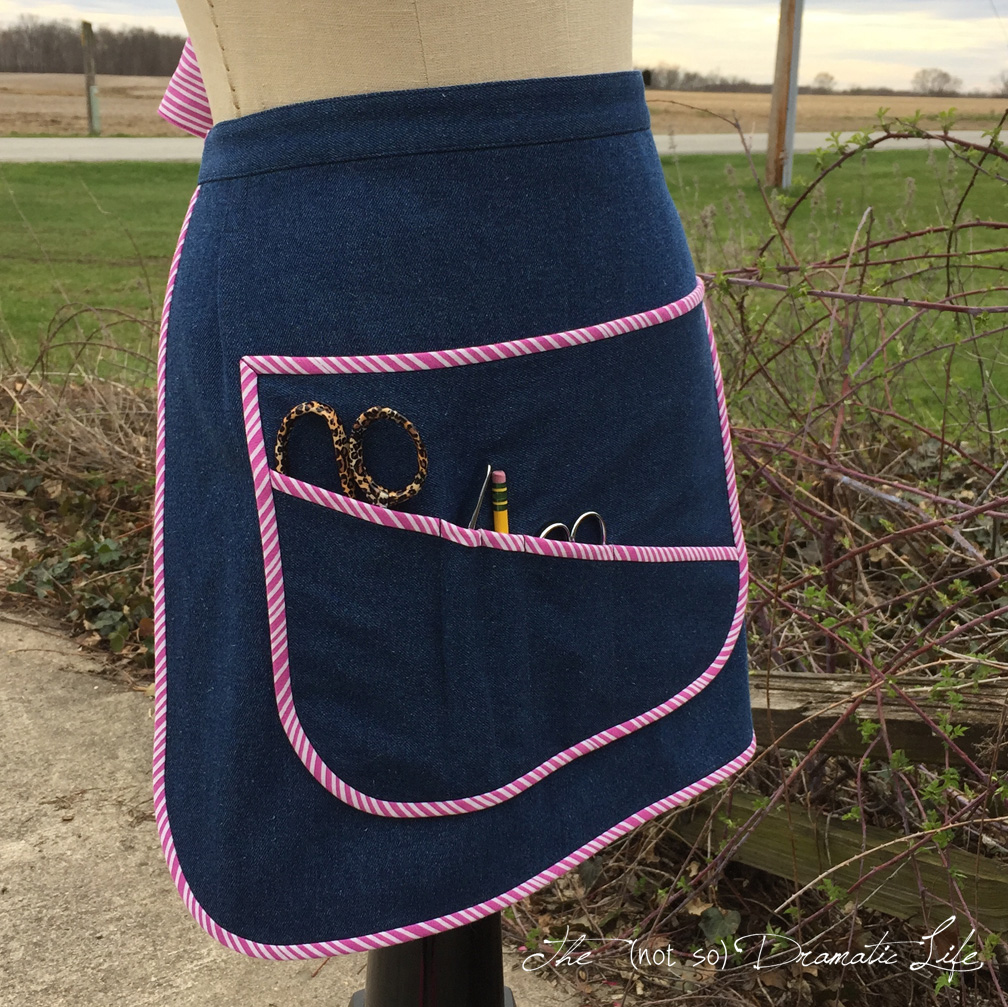


4 Comments
Kathie
September 19, 2025 at 8:34 amI do keep many of the same things at my sewing station. I have a U-shaped work area with a small cutting area on a folding table to my right and a 3-tiered cart holding all things large and small from thread, pins, marking, snipping, cleaning and oiling etc. My machine feet and quilting templates are in closed boxes in the nearest cubbies that are in the base of my 80″ long x 24″ deep ironing surface. This would lead you to think that I don’t need to get out of my chair when I sew, but the iron, design wall and all things fabric cutting are positioned away from the machine so I can move around the room during my quilting day. I use my walls by having peg boards holding rulers, scissors, cutters, embroidery frames, all within reach at the appropriate workstation. It’s a joy to be an empty nester and have the freedom to create a beautiful and functional room to work in after years of sewing at the kitchen table. Enjoy your space!
Fran
September 19, 2025 at 10:03 amI remember following the build of your space. What are the overall dimensions of your space? I am setting up a new sewing space in a section of a large pole building. I believe I will end up with a space of about 25’x25’ once we add some walls. I find that my sewing spaces evolve over time. Just when I think I’ve got it set I find some other little tweak. I like a magnetic pin dish to catch things. Your fabric boxes are adorable. Thanks for the tips.
Patti
September 20, 2025 at 7:41 amHi I use a quilted pad under the machine that I made pickers that hang down to hold scissors, seam ripper, etc. it keeps the area by the machine clear but tools immediately in front of me.
Karen
September 20, 2025 at 12:49 pmI use a child’s magnet in a long handle to swoop around after sewing.
Always leave needles threaded and knotted. Stepping on one without thread can mean surgery. An orthopedic surgeon friend who quilts says to put ironing board as far away as u can get. Long hours of sitting creates circulation problems.